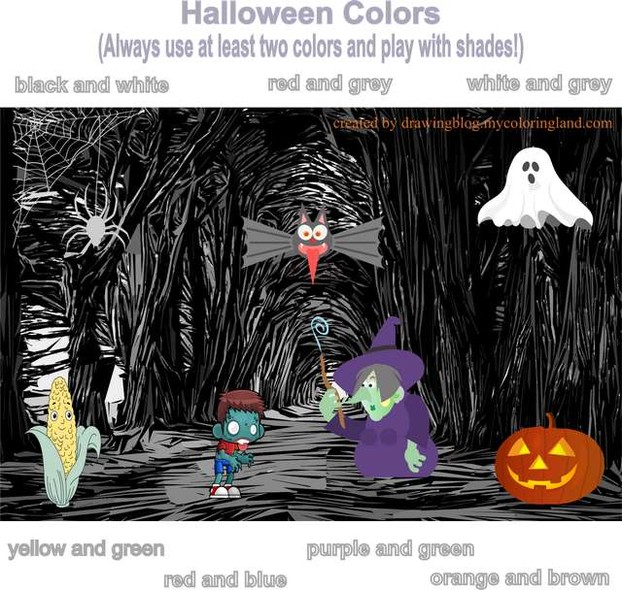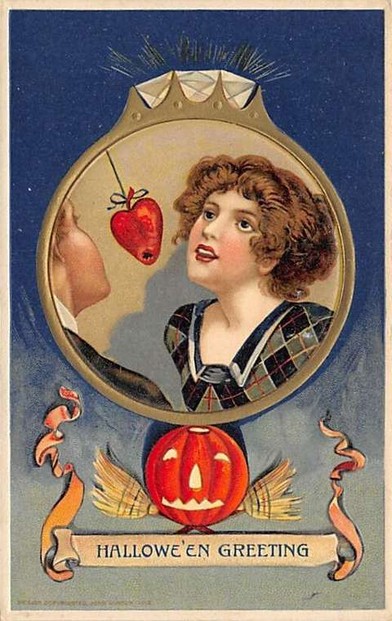The Halloween symbols seem pretty obvious - just put a witch with a black cat on the orange background, and you are good to go. Well, maybe we can add a few pumpkins, too. But simplicity is not always the best solution. This article will walk you through some of the most popular symbols connected to Halloween, with a bit of their backgrounds and some tips on their most efficient usage.
Here you'll find some classic Halloween elements, a few older ones, that are almost unknown to the younger generation, and you'll also discover new trends in the Halloween decoration. Let's dive into the top 10 Halloween symbols!










 Vintage Postcard Artists with 10 Examples of Easter Cardson 02/21/2025
Vintage Postcard Artists with 10 Examples of Easter Cardson 02/21/2025
 Valentine's Symbolson 01/23/2025
Valentine's Symbolson 01/23/2025
 Thanksgiving Symbolson 11/12/2024
Thanksgiving Symbolson 11/12/2024
 Famous Witches in Literary Historyon 10/06/2024
Famous Witches in Literary Historyon 10/06/2024


Can You Add Another Halloween Symbol?
Great news. I'll check it, that's for sure!
Yeey!
Thank you for the wizzley suggestion.
Heavy rains and winds and their computer effects kept me from putting only some sentences at a time since last week.
But, at long last with sunny weather and without computer problems this morning -- ;-D -- the Hawaiian huakai po Nightmarchers just released, but somehow without the acknowledgement, the bibliography, the conclusion or the images.
So the text should be readable even as the quartet above will be added today as soon as possible.
Heavy rain and heavy wind are affecting the computer.
Hawaiian night-marching huakai po gets entered some sentences at a time.
So it might be Monday or Tuesday. Your comment box will get a "wizzley-finished" message to this wizzley that works as inspiration source for the night-marching wizzley to come ;-D!
Thank you for appreciating the Hawaiian archipelago as not often associable with "dark stuff."
I have been away from computers from Friday evening until this morning. So I just have seen your interest in huakai po night marchers.
This morning I have started it and will hope -- despite an hour-long webinar 1:00-2:00 p.m. Eastern Time -- everything wizzley-ed before day 6:00 p.m. (or ready for 10:00 a.m. tomorrow).
Thank you for the Halloween-able suggestion.
It sounds fascinating. We don't often associate Hawaii with dark stuff. I believe, DerdriuMarriter, this calls for your specific article on the theme. Can we count on that?
Halloween symbols in the Hawaiian islands are more alike to those in Basque- and Runa shimi-speaking cultures in that they are more Day of the dead-like than Halloween trick or treating-like.
The main Hawaiian symbol associates with the night-marching Huaka’i pō (from Hawaiian hua kai pō, "[to agitate violently like the] foam [in the] sea [at] darkness" literally, "to travel in large companies at night" actually). The chanting, drumming Night Marchers, in alternating all-men and all-women rows, dress themselves in ancient battle-wear, capes and feathers on New-Moon Halloween nights and other New-Moon nights.
The Night Marchers collect the prominent dead and frighten those that offend them.
A basic Runa Shimi (from the language erroneously called Quechua ["to steal"], properly called runa shimi, "people['s] language") concerns the symbol of the chacana ("to cross [the steps into the upper world of the gods, the middle world of people, the underworld of the dead]).
The chacana domiciles level pavement with a circle in the middle and with a circle-surrounding square, whose north, east, south and west sides each depict a square projecting from their middle.
The north step is the upper world, the northeast corner of the square is the middle world and the east step is the underworld.
The wise serpent is the underworld symbol.
That is the closest that authentic Runa Shimi-speaking culture may maintain a Halloween-like symbol that nurtures life-and-death realities, not evil.
I didn't know that. Thanks, DerdriuMarriner!
The basic Basque symbol concerns the lauburuak (from Basque lau buru ak, "four head [pluralizing] s").
The lauburuak that domicile their swirls with rightward-directioned heads draw us toward life even as the lauburuak that domicile their swirls with leftward-directioned heads draw us into death.